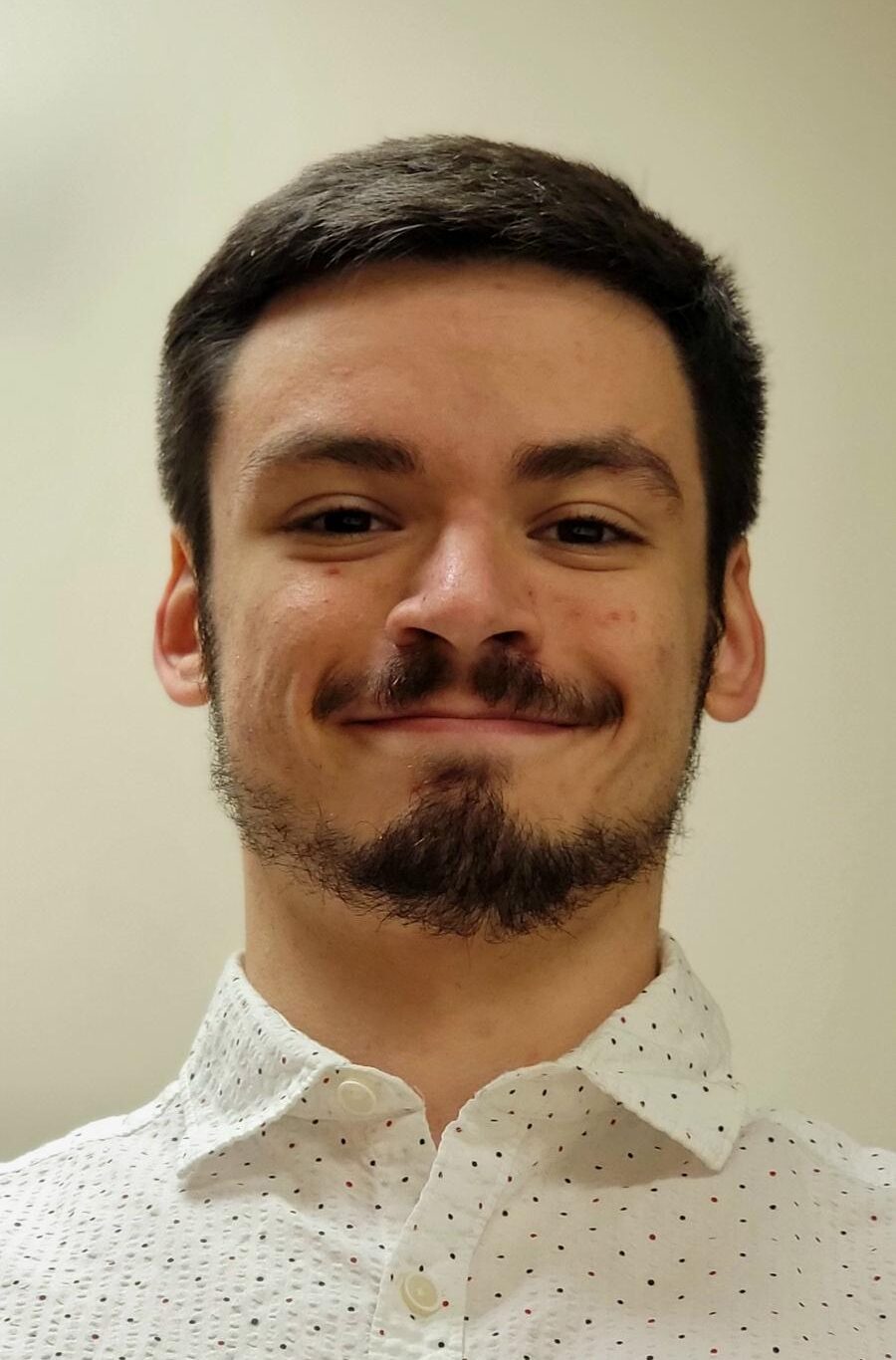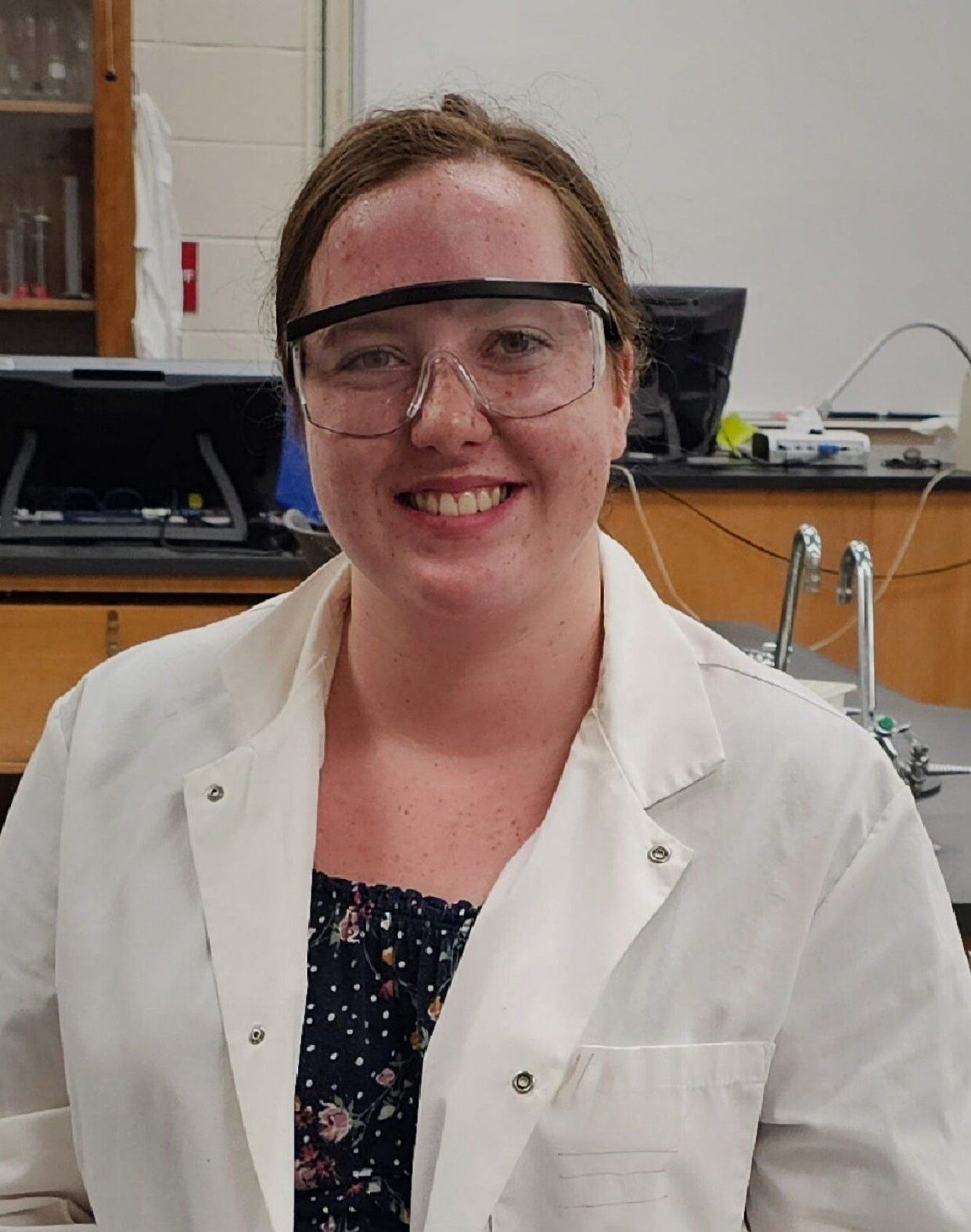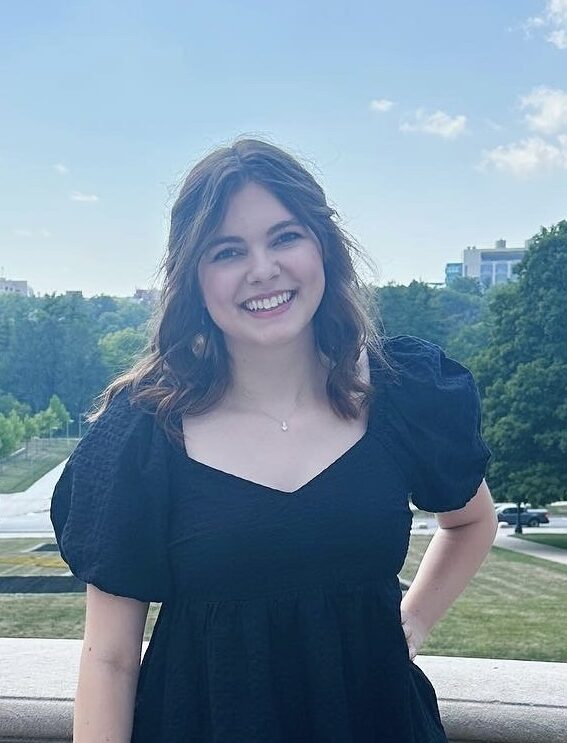Cristian Sanchez – University of Iowa
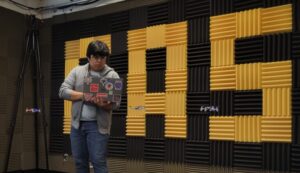 Drone swarms have shown to be useful for multiple applications including search and rescue missions, environmental monitoring, and entertainment purposes. The objective of this work is to develop control algorithms, set up localization and communication systems, and writing code to enable to flight of many quadrotor drones at once. Over the summer, we set up a communication bridge between MATLAB and the Python swarming platform. This allows us to perform calculations and generate Bernstein polynomial trajectories in MATLAB and send those to the drones through ROS. We are currently expanding to new lab with a much larger flight space. With this new space, we plan to increase our swarm size to over 200 drones and potentially more in the future.
Drone swarms have shown to be useful for multiple applications including search and rescue missions, environmental monitoring, and entertainment purposes. The objective of this work is to develop control algorithms, set up localization and communication systems, and writing code to enable to flight of many quadrotor drones at once. Over the summer, we set up a communication bridge between MATLAB and the Python swarming platform. This allows us to perform calculations and generate Bernstein polynomial trajectories in MATLAB and send those to the drones through ROS. We are currently expanding to new lab with a much larger flight space. With this new space, we plan to increase our swarm size to over 200 drones and potentially more in the future.
Ashley Rhodes – University of Iowa
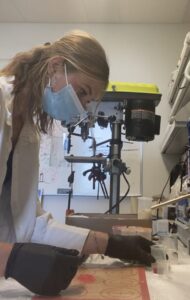 The field of gaseous materials has many far reaching and impactful applications. The ability to deliver gas to a specific area within the body has been shown to have therapeutic properties and can be beneficial for wound healing, improving cancer treatments, and decreasing inflammation. Many current methods for gas entrapment and delivery are inefficient and difficult to administer. Under the supervision of Dr. James Byrne at the University of Iowa, we are working to fabricate a solid, biodegradable implant that has the capability of high-volume gas release. Our goal is to develop a matrix conducive to delivering a variety of gasses in vivo and be able to control the dissolution of the matrix to optimize timing of gas delivery. We are working to evaluate the potential of different biomaterials that form amorphous crystalline arrangements and to alter the properties of the material to control the timing of its dissolution within the body. These innovative devices can be used to store drugs, oxygen, and any other desired material to be delivered to biological systems. They could be extremely useful in expanding the capabilities of human spaceflight exploration and the survival of living systems in space. These devices have the potential to benefit and prolong life on earth as well as enhance and enable future space exploration.
The field of gaseous materials has many far reaching and impactful applications. The ability to deliver gas to a specific area within the body has been shown to have therapeutic properties and can be beneficial for wound healing, improving cancer treatments, and decreasing inflammation. Many current methods for gas entrapment and delivery are inefficient and difficult to administer. Under the supervision of Dr. James Byrne at the University of Iowa, we are working to fabricate a solid, biodegradable implant that has the capability of high-volume gas release. Our goal is to develop a matrix conducive to delivering a variety of gasses in vivo and be able to control the dissolution of the matrix to optimize timing of gas delivery. We are working to evaluate the potential of different biomaterials that form amorphous crystalline arrangements and to alter the properties of the material to control the timing of its dissolution within the body. These innovative devices can be used to store drugs, oxygen, and any other desired material to be delivered to biological systems. They could be extremely useful in expanding the capabilities of human spaceflight exploration and the survival of living systems in space. These devices have the potential to benefit and prolong life on earth as well as enhance and enable future space exploration.
Jonathan Percy – University of Iowa
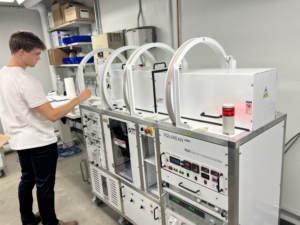 Medical imaging serves a crucial role in establishing diagnosis, determining severity, monitoring progression, and uncovering the pathophysiology associated with many diseases. This research, led by Dr. Sean Fain, explores novel applications of hyperpolarized (HP) 129Xe magnetic resonance imaging (MRI) in populations including those suffering from Long Covid, cystic fibrosis, interstitial lung disease, and radiation-induced pulmonary changes associated with radiation therapy. This technique differs from standard imaging practices today while measuring lung function more directly than conventional pulmonary tests delivering quantitative measures of ventilation, perfusion, and gas exchange of the lungs. After more research, these novel biomarkers could possibly guide adjustments to treatment and deployment of potential therapies to improve outcomes.
Medical imaging serves a crucial role in establishing diagnosis, determining severity, monitoring progression, and uncovering the pathophysiology associated with many diseases. This research, led by Dr. Sean Fain, explores novel applications of hyperpolarized (HP) 129Xe magnetic resonance imaging (MRI) in populations including those suffering from Long Covid, cystic fibrosis, interstitial lung disease, and radiation-induced pulmonary changes associated with radiation therapy. This technique differs from standard imaging practices today while measuring lung function more directly than conventional pulmonary tests delivering quantitative measures of ventilation, perfusion, and gas exchange of the lungs. After more research, these novel biomarkers could possibly guide adjustments to treatment and deployment of potential therapies to improve outcomes.
Tristian Parmerlee – Drake University
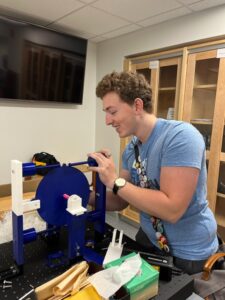 While experiencing zero gravity in space, astronauts without proper exercise will begin to develop muscle atrophy which can limit their ability to return to Earth safely. To combat this problem, researchers have suggest the use of centripetal force to mimic the gravitation force on Earth. However, this also comes with a host of problems both financially and physically. MISSFIT’s Artificial Gravity group works towards a new model of artificial gravity that will be both affordable to build, practical for space travel, and avoid negative health effects. The model prototype is currently being worked on right now, with much progress towards a finished prototype being made over the past few months.
While experiencing zero gravity in space, astronauts without proper exercise will begin to develop muscle atrophy which can limit their ability to return to Earth safely. To combat this problem, researchers have suggest the use of centripetal force to mimic the gravitation force on Earth. However, this also comes with a host of problems both financially and physically. MISSFIT’s Artificial Gravity group works towards a new model of artificial gravity that will be both affordable to build, practical for space travel, and avoid negative health effects. The model prototype is currently being worked on right now, with much progress towards a finished prototype being made over the past few months.
Christian O’Brien – University of Iowa
Hailey Negley – Iowa State University
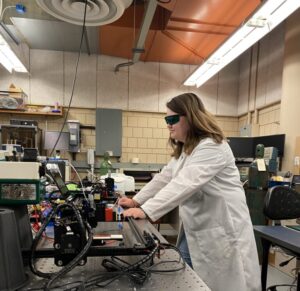 This research project concentrates on the design, development, and evaluation of a bio-ionic platform that facilitates physiological studies through continuous and real-time monitoring of cellular ionic activities. This platform functions at the interface of biological cells and interacts with the cells’ bioenvironment, enabling the monitoring of various biological attributes such as metabolism, growth, stress response, damage repair, physiology, and development, as these attributes are reflected in the cells’ ionic activities. The outcome of the research will serve as the foundation for a larger project, wherein we aim to gain a comprehensive understanding of how space environment and gravity impact cellular functions.
This research project concentrates on the design, development, and evaluation of a bio-ionic platform that facilitates physiological studies through continuous and real-time monitoring of cellular ionic activities. This platform functions at the interface of biological cells and interacts with the cells’ bioenvironment, enabling the monitoring of various biological attributes such as metabolism, growth, stress response, damage repair, physiology, and development, as these attributes are reflected in the cells’ ionic activities. The outcome of the research will serve as the foundation for a larger project, wherein we aim to gain a comprehensive understanding of how space environment and gravity impact cellular functions.
Cameron Menini – Loras College
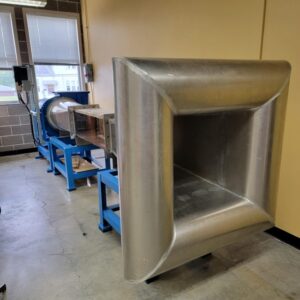 As the aviation industry continues to push forward with greener and more efficient travel, new design concepts are needed to reach the next level of aircraft aerodynamic efficiency. This research aims to conduct external flow analyses for conceptual aircraft over the complete flight envelope of modeled aircraft through CFD methods and wind tunnel testing. The first phase of the research will focus on the applicability of the turbulence models for benchmarked cases of airfoils for which experimental results are already available. Following data validation, the second phase will involve applying the same computational models to a scaled conceptual aircraft configuration to explore improved aerodynamic efficiency, drag reduction, and opportunities for greener propulsion. A scaled version of the aircraft configuration will be 3D printed and subsequently tested using a wind tunnel. The experimental results will be compared to current aircraft to validate advances in the aerodynamic efficiency of the conceptual models.
As the aviation industry continues to push forward with greener and more efficient travel, new design concepts are needed to reach the next level of aircraft aerodynamic efficiency. This research aims to conduct external flow analyses for conceptual aircraft over the complete flight envelope of modeled aircraft through CFD methods and wind tunnel testing. The first phase of the research will focus on the applicability of the turbulence models for benchmarked cases of airfoils for which experimental results are already available. Following data validation, the second phase will involve applying the same computational models to a scaled conceptual aircraft configuration to explore improved aerodynamic efficiency, drag reduction, and opportunities for greener propulsion. A scaled version of the aircraft configuration will be 3D printed and subsequently tested using a wind tunnel. The experimental results will be compared to current aircraft to validate advances in the aerodynamic efficiency of the conceptual models.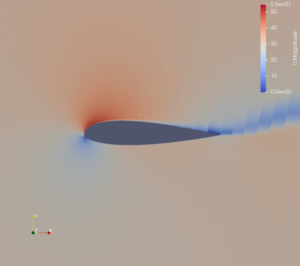
Carmen Martinez – DMACC
In summer 2023, I participated in an IINSPIRE-LSAMP collaborative program between DMACC and Iowa State University called RISEUP. This was an opportunity for minority students, like myself, to be introduced to the fundamentals of STEM related research. I worked with Dr. Alina Kirillova’s research team at Iowa State University to study the Mechanical Properties of 3D Printed Porous Polymer Structures. In biomedical applications, there have been a multitude of applications such as drug delivery, tissue regeneration, and patient-specific devices. Due to the porous nature of the human body, we studied the gyroid, which is an inner-connected porous structure. Gyroids were printed of varying unit cell sizes in four different resins. Once printed and cured, the gyroids underwent compression testing using an Instron. These results demonstrate how cell unit size affects the strength of the gyroid. Due to the research I was involved in last summer, and my interest in Astronomy, I am excited into a continuation of that research. This fall, due to the limited research facilities of DMACC, I am completing a literature review surrounding the benefits, challenges, and frontiers of research through incorporation of using 3D printed polymers in space.
Sabryn Labenz – University of Northern Iowa
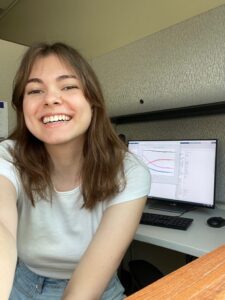 Homologous recombination is a DNA repair technique in which nucleoprotein RAD51 facilitates strand exchange between the broken double-stranded DNA and a homologous strand. RAD51, with assistance from mediators, forms nucleoprotein filaments on single-stranded DNA overhangs produced after a double-stranded break. Mutations in the RAD51 interface can have negative effects on the stability of the nucleoprotein filament. Using FRET and mass photometry this study examines the effect of a mutation in the F86E residue on essential RAD51 functions.
Homologous recombination is a DNA repair technique in which nucleoprotein RAD51 facilitates strand exchange between the broken double-stranded DNA and a homologous strand. RAD51, with assistance from mediators, forms nucleoprotein filaments on single-stranded DNA overhangs produced after a double-stranded break. Mutations in the RAD51 interface can have negative effects on the stability of the nucleoprotein filament. Using FRET and mass photometry this study examines the effect of a mutation in the F86E residue on essential RAD51 functions.
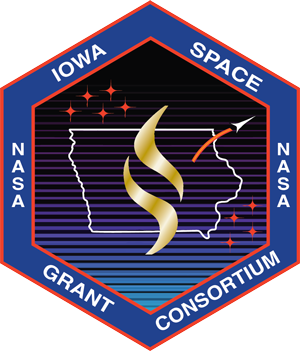
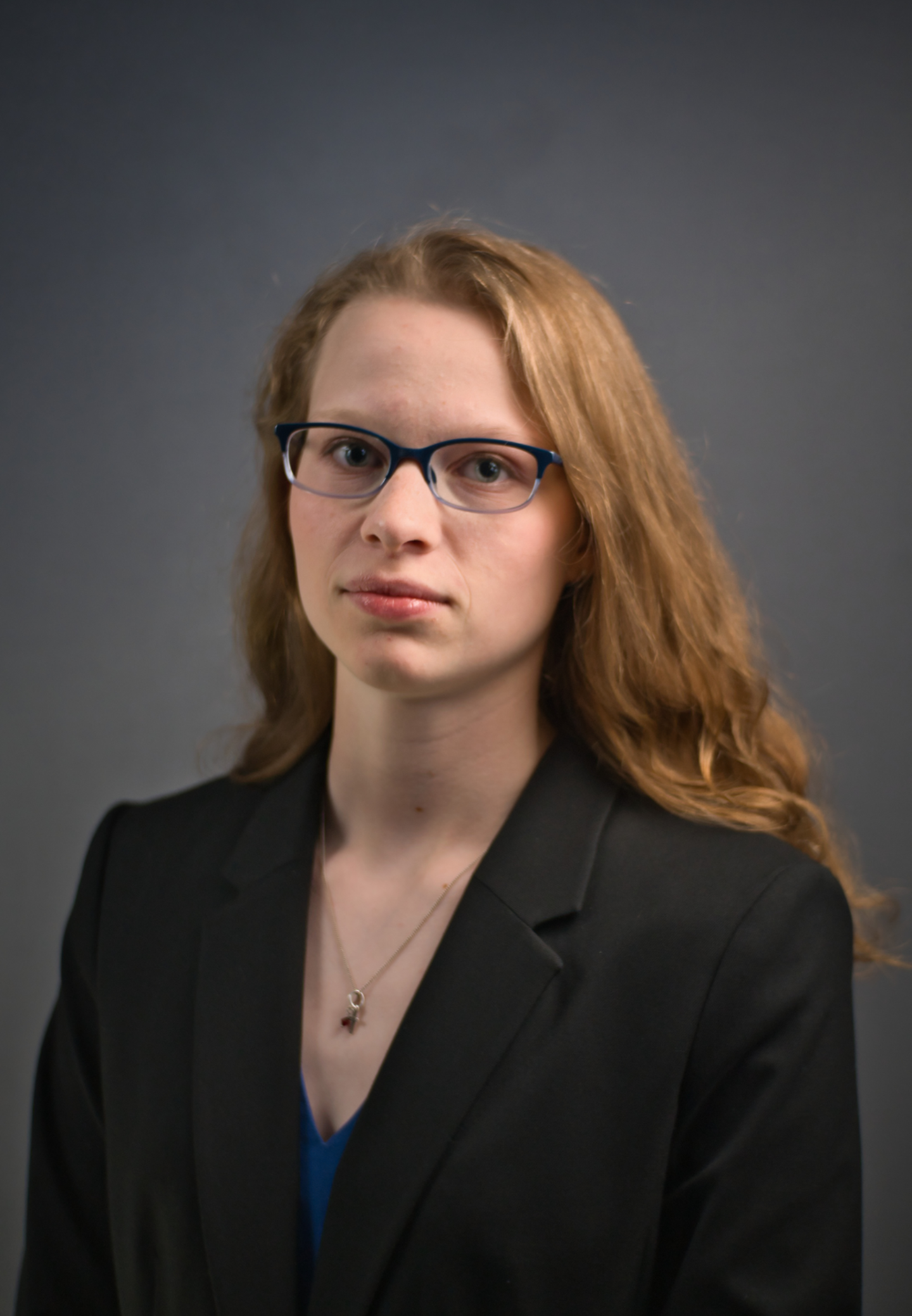
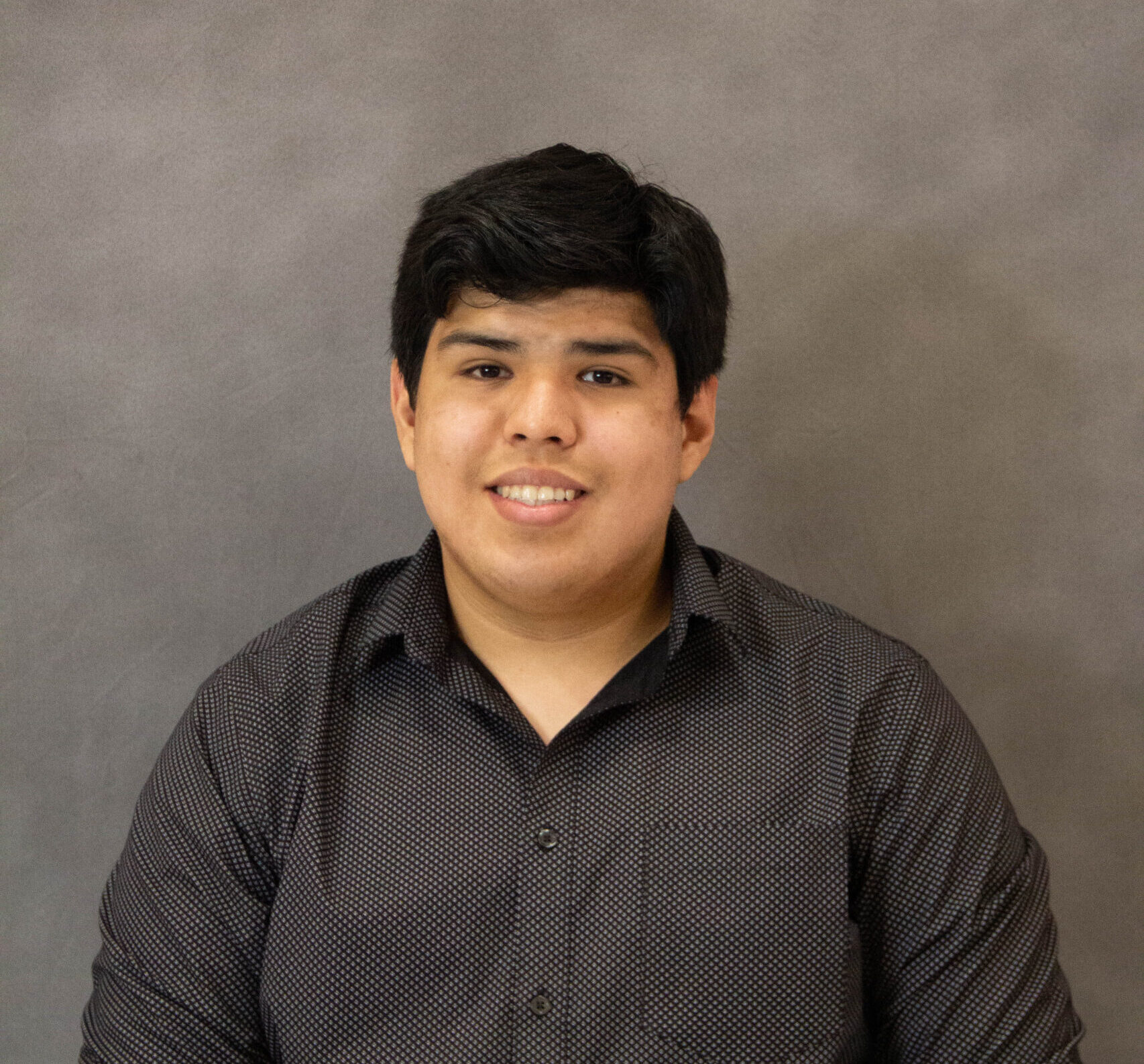

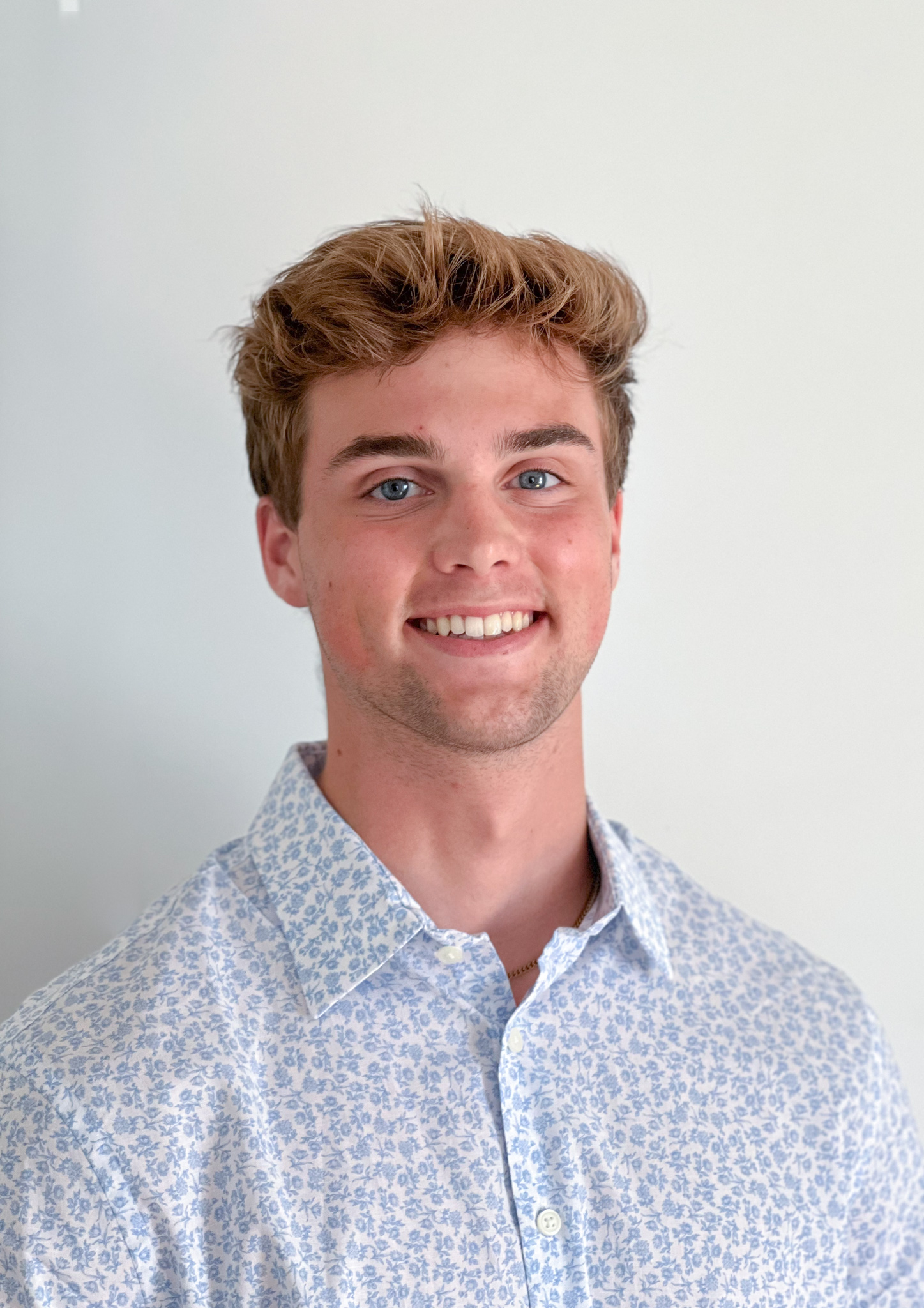


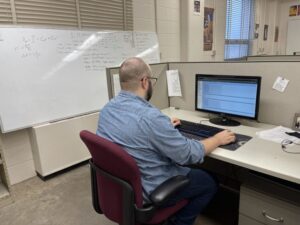 Stellar merger remnants are most often obscured by opaque clouds of gas and dust. TYC 2597-735-1 presents a rare opportunity to observe the post-merger remnant and its surroundings in the near-infrared in order to better understand the impacts stellar mergers have on their systems.
Stellar merger remnants are most often obscured by opaque clouds of gas and dust. TYC 2597-735-1 presents a rare opportunity to observe the post-merger remnant and its surroundings in the near-infrared in order to better understand the impacts stellar mergers have on their systems.
